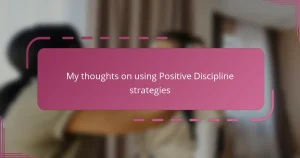Key takeaways
- Gentle parenting focuses on connection, empathy, and understanding rather than control, leading to calmer interactions.
- Active listening and setting gentle boundaries foster trust and emotional security in children.
- Establishing flexible routines and rituals aids in creating a supportive environment, reducing frustration and enhancing connections.
- Practicing self-awareness and pausing before reacting helps transform challenging moments into opportunities for compassion and growth.
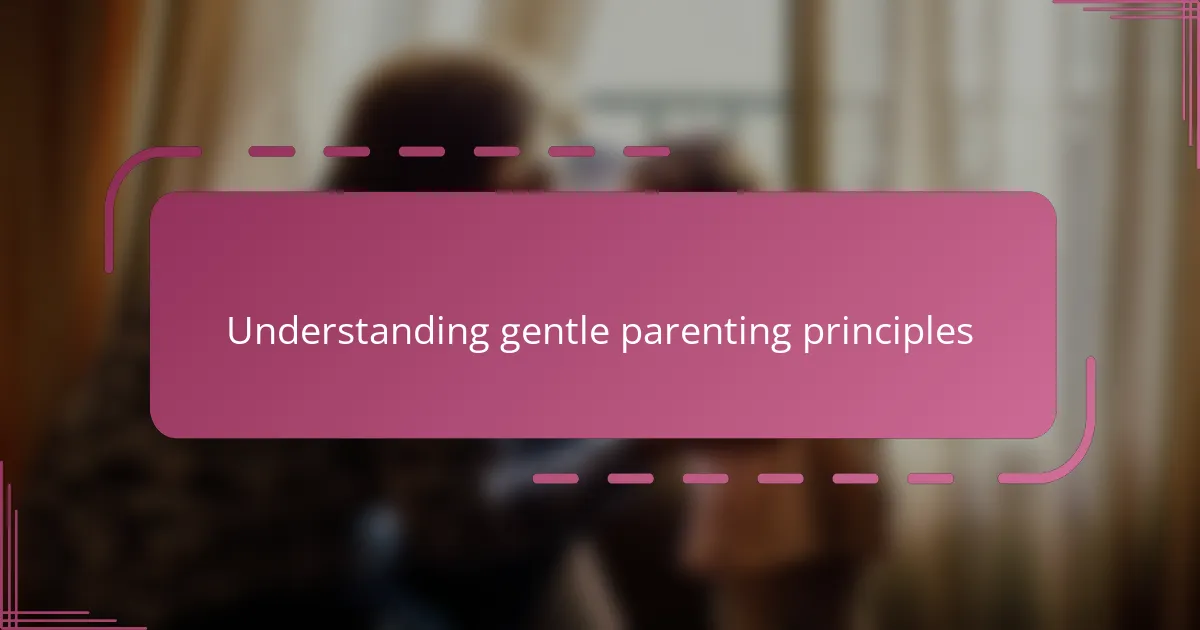
Understanding Gentle Parenting Principles
At its core, gentle parenting is about connection—truly seeing and understanding your child rather than trying to control them. I remember a time when my toddler was having a meltdown in the grocery store, and instead of reacting with frustration, I paused to ask myself, “What is she really trying to tell me?” That shift in perspective changed everything.
This approach emphasizes empathy and respect. It’s not about letting children do whatever they want, but about guiding them patiently while honoring their feelings. Have you ever noticed how much calmer conversations become when both sides feel heard? I have, and it’s been transformative in my relationship with my kids.
Gentle parenting also requires a lot of self-awareness. I had to confront my own impulse to react harshly when stressed—a habit I wasn’t proud of. But learning to pause, breathe, and respond with kindness made all the difference. Isn’t it amazing how changing ourselves can create a more peaceful environment for our children?
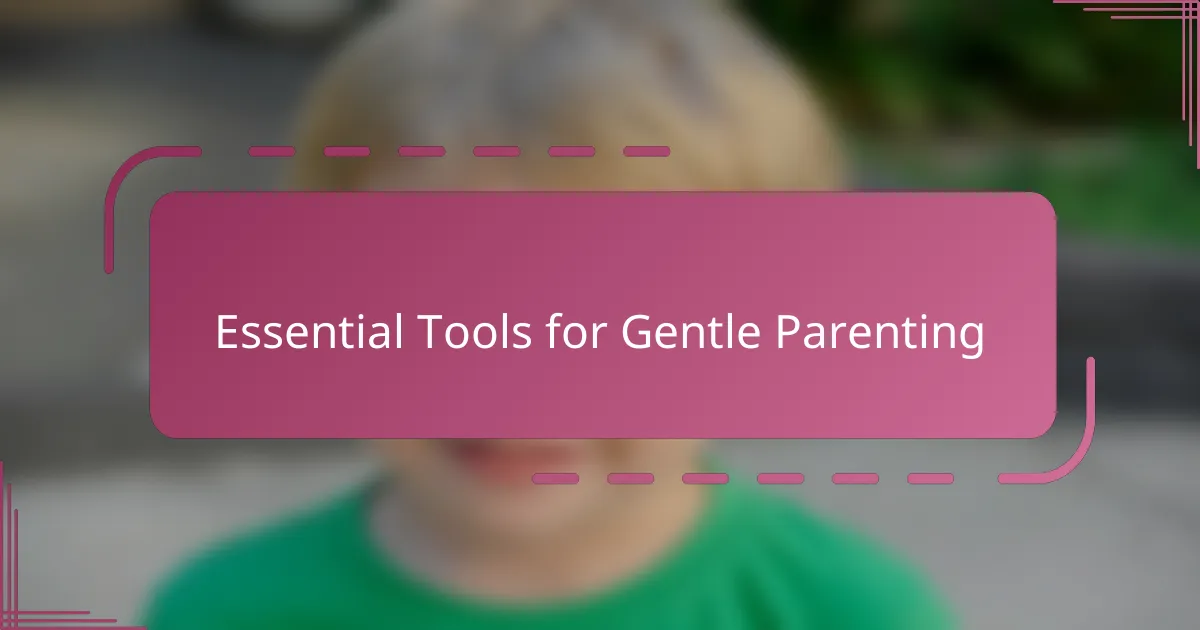
Essential Tools for Gentle Parenting
One tool I found invaluable was active listening. Early on, I realized that simply giving my child my full attention—even during a tantrum—helped her feel understood and less alone. Have you ever tried really tuning in without planning your response? It’s surprisingly powerful.
Another essential tool is setting gentle boundaries. I used to fear that rules would stifle my child’s spirit, but framing limits with compassion actually built trust. Saying things like, “I know you want to keep playing, but it’s time to clean up so we can have dinner together” made transitions smoother and less stressful.
Lastly, patience became my best ally. There were countless moments when I wanted quick results, but slowing down and validating emotions instead created deeper connections. Do you ever catch yourself rushing? I’m learning that embracing the pace of my child’s feelings leads to real growth—for both of us.
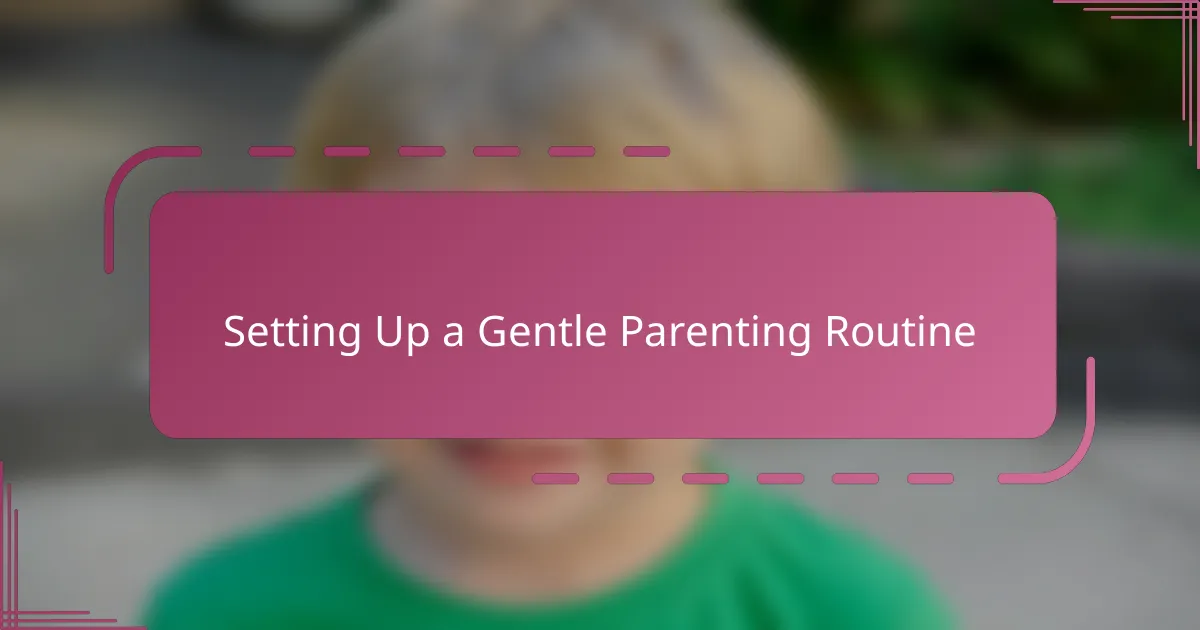
Setting Up a Gentle Parenting Routine
Creating a gentle parenting routine meant weaving empathy and patience into our daily rhythm. I started by carving out calm moments each morning to connect with my child before the day’s chaos began. Have you ever noticed how those few quiet minutes can set a peaceful tone for everything that follows?
Consistency was tricky at first, especially when life felt overwhelming. Yet, establishing simple rituals—like a gentle goodnight talk or a midday check-in—helped both of us feel grounded. I found that these predictability anchors made it easier to navigate challenges with kindness rather than frustration.
I also made sure to build in flexibility, reminding myself that routines don’t have to be rigid. When my child needed extra cuddles instead of her usual independent playtime, I adjusted without stress. Isn’t it comforting to know that routines can be loving frameworks, not strict schedules?
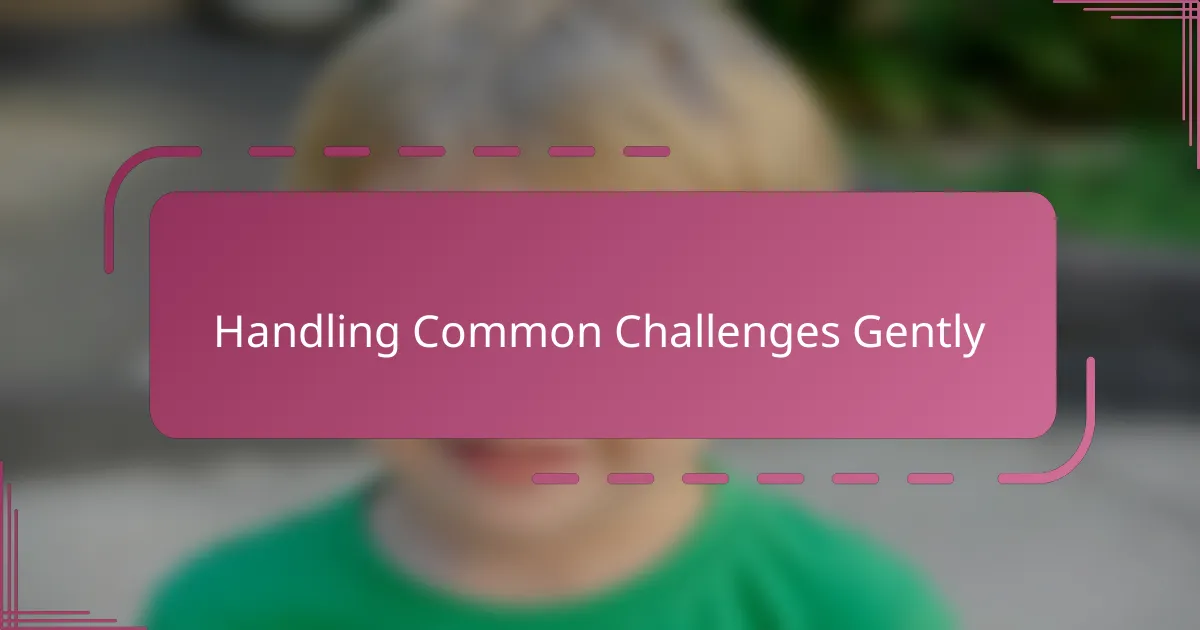
Handling Common Challenges Gently
Handling common challenges gently means embracing frustration as a signal, not a failure. I once noticed that when my child refused to share toys, instead of insisting or punishing, I asked, “What’s making it hard to share right now?” This simple question opened a door to understanding his feelings of insecurity rather than just focusing on the behavior.
Sometimes, patience truly feels like the hardest part. During bedtime battles, I reminded myself that delays and protests weren’t personal attacks but expressions of his need for security. Have you ever tried to match your child’s tempo rather than imposing yours? It changed those nights from power struggles to moments of connection.
Another challenge is managing our own reactions. When exhaustion hits and my temper flares, I catch myself and step back, taking a deep breath before responding. Isn’t it incredible how a brief pause can shift tension into tenderness? It’s a small practice, but it creates space for compassion in the toughest moments.
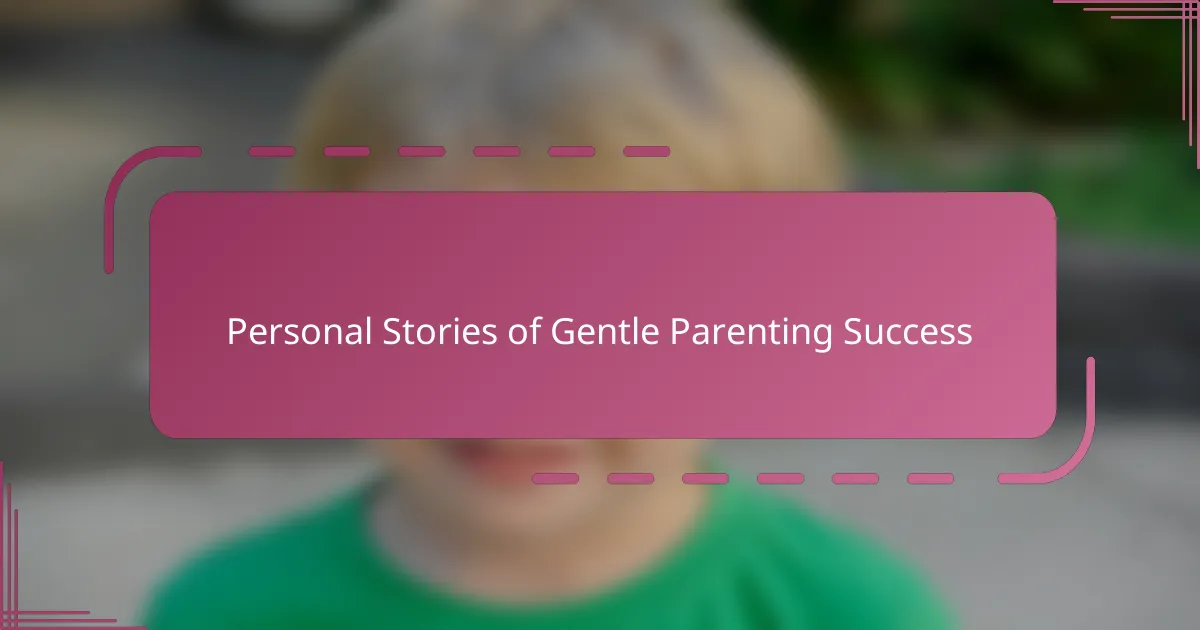
Personal Stories of Gentle Parenting Success
One moment that stands out for me was when my son, upset after a fight with a friend, came to me instead of retreating into silence. I listened quietly and offered comfort without rushing to fix things, and that simple presence made all the difference. Have you ever felt how just being there—without judgment—can transform a tough moment into a healing one?
There was a time when my daughter refused to eat her dinner, and instead of insisting or getting angry, I asked her what she was feeling. It turned out she was just tired and overwhelmed after a busy day. That gentle pause not only avoided a battle but deepened our understanding—and hers—about her own needs.
I remember doubting myself during a particularly stressful week when my patience wore thin. But when I apologized to my child for losing my cool, something shifted: she forgave me instantly and seemed to learn that kindness includes forgiving ourselves. Hasn’t that experience taught me that gentle parenting isn’t about perfection, but about honest connection?
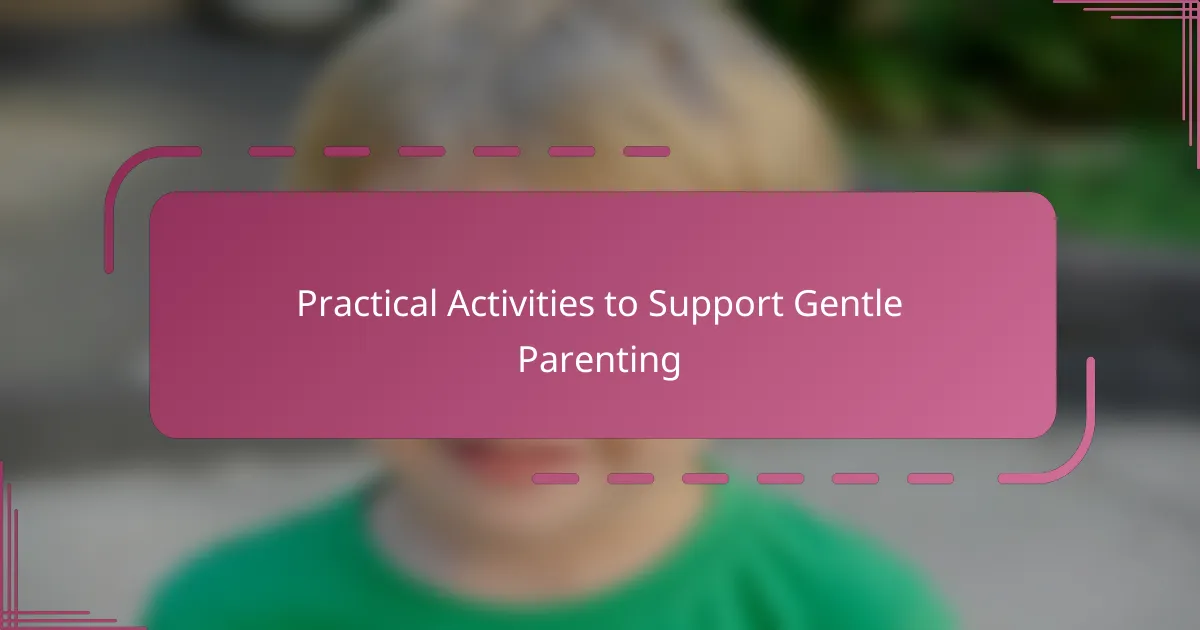
Practical Activities to Support Gentle Parenting
One activity that truly supported my gentle parenting journey was creating a “feelings corner” at home. When my child felt overwhelmed or upset, having a cozy space filled with soft pillows, books about emotions, and calming tools made it easier for her to pause and self-soothe. Have you ever noticed how giving children a physical space to retreat to can empower their emotional regulation? It really changed how we handled big feelings together.
Another practical step involved daily “emotion check-ins.” Each evening, I asked my child to share one thing that made her happy and one thing that was hard that day. This simple ritual not only helped me stay tuned into her world but also taught her to name her feelings without fear. I found that these small conversations built a bridge of trust that made challenging moments less intimidating for both of us.
I also incorporated gentle routines around transitions, which can be tricky times for kids. For instance, before leaving the playground, we’d count down together—“Five more minutes, then we’ll head home”—to prepare her without surprise or resistance. Do you think setting these gentle expectations helps children feel more secure? In my experience, it reduced power struggles and made departures smoother for everyone involved.


